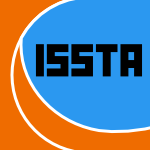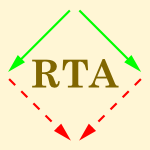46 papers:
 CHI-2015-AhmedMJ
CHI-2015-AhmedMJ- Residual Mobilities: Infrastructural Displacement and Post-Colonial Computing in Bangladesh (SIA, NJM, SJJ), pp. 437–446.
 SAT-2014-FeketeC #constraints #pseudo
SAT-2014-FeketeC #constraints #pseudo- Simplifying Pseudo-Boolean Constraints in Residual Number Systems (YF, MC), pp. 351–366.
 DHM-HB-2013-ColomboFRVZ #3d #automation #image #re-engineering
DHM-HB-2013-ColomboFRVZ #3d #automation #image #re-engineering- Automatic 3D Reconstruction of Transfemoral Residual Limb from MRI Images (GC, GF, CR, AV, AZ), pp. 324–332.
 RE-2013-Salger #challenge #open science #requirements #research
RE-2013-Salger #challenge #open science #requirements #research- Requirements reviews revisited: Residual challenges and open research questions (FS), pp. 250–255.
 HPDC-2013-ClaySM #clustering #interactive #scalability
HPDC-2013-ClaySM #clustering #interactive #scalability- Building and scaling virtual clusters with residual resources from interactive clouds (RBC, ZS, XM), pp. 119–120.
 ICML-2012-KalaitzisL #analysis #component
ICML-2012-KalaitzisL #analysis #component- Residual Components Analysis (AAK, NDL), p. 73.
 ICPR-2012-WangXY #classification #image #re-engineering
ICPR-2012-WangXY #classification #image #re-engineering- Sparse residue for occluded face image reconstruction and classification (JW, YX, JY), pp. 1707–1710.
 ISSTA-2012-LiRCS #debugging #detection #precise #predict
ISSTA-2012-LiRCS #debugging #detection #precise #predict- Residual investigation: predictive and precise bug detection (KL, CR, CC, YS), pp. 298–308.
 CIAA-J-2010-Dangalchev11
CIAA-J-2010-Dangalchev11- Residual Closeness and Generalized Closeness (CD), pp. 1939–1948.
 DLT-2011-Kasprzik #automaton #finite #query
DLT-2011-Kasprzik #automaton #finite #query- Inference of Residual Finite-State Tree Automata from Membership Queries and Finite Positive Data (AK), pp. 476–477.
 CASE-2010-JiangKM #monitoring #predict
CASE-2010-JiangKM #monitoring #predict- Residual life prediction for systems subject to condition monitoring (RJ, MJK, VM), pp. 106–111.
 CHI-2010-LankST #documentation #fault #injection #using
CHI-2010-LankST #documentation #fault #injection #using- Estimating residual error rate in recognized handwritten documents using artificial error injection (EL, RS, MAT), pp. 1–4.
 ICML-2010-Scherrer #difference #fixpoint #perspective
ICML-2010-Scherrer #difference #fixpoint #perspective- Should one compute the Temporal Difference fix point or minimize the Bellman Residual? The unified oblique projection view (BS), pp. 959–966.
 ICPR-2010-JirachawengHLYA #analysis #modelling
ICPR-2010-JirachawengHLYA #analysis #modelling- Residual Analysis for Fingerprint Orientation Modeling (SJ, ZH, JL, WYY, VA), pp. 1196–1199.
 ICST-2010-NagahawatteD #effectiveness #fault #testing
ICST-2010-NagahawatteD #effectiveness #fault #testing- The Effectiveness of Regression Testing Techniques in Reducing the Occurrence of Residual Defects (PN, HD), pp. 79–88.
 DAC-2009-VillenaS #automation #modelling #multi #named
DAC-2009-VillenaS #automation #modelling #multi #named- ARMS — automatic residue-minimization based sampling for multi-point modeling techniques (JFV, LMS), pp. 951–956.
 ICML-2008-Li #approximate #comparison #difference #linear #worst-case
ICML-2008-Li #approximate #comparison #difference #linear #worst-case- A worst-case comparison between temporal difference and residual gradient with linear function approximation (LL), pp. 560–567.
 SAC-2008-AlthausCEKMMZ
SAC-2008-AlthausCEKMMZ- Computing H/D-exchange speeds of single residues from data of peptic fragments (EA, SC, MRE, AK, AGM, AMB, HZ), pp. 1273–1277.
 SAC-2008-DornS #3d #approximate #named #predict
SAC-2008-DornS #3d #approximate #named #predict- CReF: a central-residue-fragment-based method for predicting approximate 3-D polypeptides structures (MD, ONdS), pp. 1261–1267.
 ASE-2007-DwyerP #cost analysis #dynamic analysis #static analysis #type system
ASE-2007-DwyerP #cost analysis #dynamic analysis #static analysis #type system- Residual dynamic typestate analysis exploiting static analysis: results to reformulate and reduce the cost of dynamic analysis (MBD, RP), pp. 124–133.
 ESEC-FSE-2007-ChilimbiNV #effectiveness #performance #profiling #testing
ESEC-FSE-2007-ChilimbiNV #effectiveness #performance #profiling #testing- Quantifying the effectiveness of testing via efficient residual path profiling (TMC, AVN, KV), pp. 545–548.
 ICPR-v4-2006-MellakhPD #using
ICPR-v4-2006-MellakhPD #using- Using Signal/Residual Information of Eigenfaces for PCA Face Space Dimensionality Characteristics (MAM, DPD, BD), pp. 574–577.
 SAC-2004-JiangWM #network #thread
SAC-2004-JiangWM #network #thread- Protein threading with residue-environment matching by artificial neural networks (NJ, WXW, IM), pp. 209–210.
 DLT-2003-CarmeGLTT #automaton #finite
DLT-2003-CarmeGLTT #automaton #finite- Residual Finite Tree Automata (JC, RG, AL, AT, MT), pp. 171–182.
 ICALP-2003-DenisE #automaton #probability
ICALP-2003-DenisE #automaton #probability- Residual Languages and Probabilistic Automata (FD, YE), pp. 452–463.
 ICML-2003-SchoknechtM #algorithm #performance
ICML-2003-SchoknechtM #algorithm #performance- TD(0) Converges Provably Faster than the Residual Gradient Algorithm (RS, AM), pp. 680–687.
 RTA-2003-Bruggink #higher-order
RTA-2003-Bruggink #higher-order- Residuals in Higher-Order Rewriting (HJSB), pp. 123–137.
 STOC-2002-KargerL #graph #random
STOC-2002-KargerL #graph #random- Random sampling in residual graphs (DRK, MSL), pp. 63–66.
 RTA-2002-Mellies #axiom #revisited
RTA-2002-Mellies #axiom #revisited- Axiomatic Rewriting Theory VI Residual Theory Revisited (PAM), pp. 24–50.
 SIGIR-2001-AndoL #analysis
SIGIR-2001-AndoL #analysis- Iterative Residual Rescaling: An Analysis and Generalization of LSI (RKA, LL), pp. 154–162.
 RE-2001-Wile #architecture #requirements
RE-2001-Wile #architecture #requirements- Residual Requirements and Architectural Residue (DSW), pp. 194–201.
 SAC-2001-ZhouCH #correlation #identification #optimisation #problem #set #using
SAC-2001-ZhouCH #correlation #identification #optimisation #problem #set #using- Identifying the most significant pairwise correlations of residues in different positions of helices: the subset selection problem using least squares optimization (XZ, GC, MTH), pp. 51–55.
 DATE-1999-NagC
DATE-1999-NagC- Post-Placement Residual-Overlap Removal with Minimal Movement (SN, KC), pp. 581–586.
 DATE-1999-NoufalN #framework #generative #multi #self
DATE-1999-NoufalN #framework #generative #multi #self- A CAD Framework for Generating Self-Checking 1 Multipliers Based on Residue Codes (IAN, MN), p. 122–?.
 ICSE-1999-PavlopoulouY #monitoring #test coverage
ICSE-1999-PavlopoulouY #monitoring #test coverage- Residual Test Coverage Monitoring (CP, MY), pp. 277–284.
 ICML-1996-BanderaVBHB #visual notation
ICML-1996-BanderaVBHB #visual notation- Residual Q-Learning Applied to Visual Attention (CB, FJV, JMB, MEH, LCBI), pp. 20–27.
 ALP-1996-KhasidashviliG #normalisation #standard
ALP-1996-KhasidashviliG #normalisation #standard- Discrete Normalization and Standardization in Deterministic Residual Structures (ZK, JRWG), pp. 135–149.
 DAC-1995-Kimura #verification
DAC-1995-Kimura #verification- Residue BDD and Its Application to the Verification of Arithmetic Circuits (SK), pp. 542–545.
 ICML-1995-Baird #algorithm #approximate #learning
ICML-1995-Baird #algorithm #approximate #learning- Residual Algorithms: Reinforcement Learning with Function Approximation (LCBI), pp. 30–37.
 PLILP-1994-Schulte #garbage collection
PLILP-1994-Schulte #garbage collection- Deriving Residual Reference Count Garbage Collectors (WS), pp. 102–116.
 PEPM-1992-Malmkjaer #predict #source code
PEPM-1992-Malmkjaer #predict #source code- Predicting Properties of Residual Programs (KM), pp. 8–13.
 WSA-1992-Hanus #abstract interpretation #algorithm #logic programming #source code
WSA-1992-Hanus #abstract interpretation #algorithm #logic programming #source code- An Abstract Interpretation Algorithm for Residuating Logic Programs (MH), pp. 304–312.
 JICSLP-1992-Hanus #on the
JICSLP-1992-Hanus #on the- On the Completeness of Residuation (MH), pp. 192–206.
 STOC-1989-Vallee #integer #performance #polynomial
STOC-1989-Vallee #integer #performance #polynomial- Provably Fast Integer Factoring with Quasi-Uniform Small Quadratic Residues (BV), pp. 98–106.
 ICALP-1988-PanangadenS #nondeterminism #power of
ICALP-1988-PanangadenS #nondeterminism #power of- Computations, Residuals, and the Power of Indeterminacy (PP, EWS), pp. 439–454.
 DAC-1971-BossenOPS #network
DAC-1971-BossenOPS #network- Minimum test patterns for residue networks (DCB, DLO, AMP, MSS), pp. 278–284.
 CHI-2015-AhmedMJ
CHI-2015-AhmedMJ SAT-2014-FeketeC #constraints #pseudo
SAT-2014-FeketeC #constraints #pseudo DHM-HB-2013-ColomboFRVZ #3d #automation #image #re-engineering
DHM-HB-2013-ColomboFRVZ #3d #automation #image #re-engineering RE-2013-Salger #challenge #open science #requirements #research
RE-2013-Salger #challenge #open science #requirements #research HPDC-2013-ClaySM #clustering #interactive #scalability
HPDC-2013-ClaySM #clustering #interactive #scalability ICML-2012-KalaitzisL #analysis #component
ICML-2012-KalaitzisL #analysis #component ICPR-2012-WangXY #classification #image #re-engineering
ICPR-2012-WangXY #classification #image #re-engineering ISSTA-2012-LiRCS #debugging #detection #precise #predict
ISSTA-2012-LiRCS #debugging #detection #precise #predict CIAA-J-2010-Dangalchev11
CIAA-J-2010-Dangalchev11 DLT-2011-Kasprzik #automaton #finite #query
DLT-2011-Kasprzik #automaton #finite #query CASE-2010-JiangKM #monitoring #predict
CASE-2010-JiangKM #monitoring #predict CHI-2010-LankST #documentation #fault #injection #using
CHI-2010-LankST #documentation #fault #injection #using ICML-2010-Scherrer #difference #fixpoint #perspective
ICML-2010-Scherrer #difference #fixpoint #perspective ICPR-2010-JirachawengHLYA #analysis #modelling
ICPR-2010-JirachawengHLYA #analysis #modelling ICST-2010-NagahawatteD #effectiveness #fault #testing
ICST-2010-NagahawatteD #effectiveness #fault #testing DAC-2009-VillenaS #automation #modelling #multi #named
DAC-2009-VillenaS #automation #modelling #multi #named ICML-2008-Li #approximate #comparison #difference #linear #worst-case
ICML-2008-Li #approximate #comparison #difference #linear #worst-case SAC-2008-AlthausCEKMMZ
SAC-2008-AlthausCEKMMZ SAC-2008-DornS #3d #approximate #named #predict
SAC-2008-DornS #3d #approximate #named #predict ASE-2007-DwyerP #cost analysis #dynamic analysis #static analysis #type system
ASE-2007-DwyerP #cost analysis #dynamic analysis #static analysis #type system ESEC-FSE-2007-ChilimbiNV #effectiveness #performance #profiling #testing
ESEC-FSE-2007-ChilimbiNV #effectiveness #performance #profiling #testing ICPR-v4-2006-MellakhPD #using
ICPR-v4-2006-MellakhPD #using SAC-2004-JiangWM #network #thread
SAC-2004-JiangWM #network #thread DLT-2003-CarmeGLTT #automaton #finite
DLT-2003-CarmeGLTT #automaton #finite ICALP-2003-DenisE #automaton #probability
ICALP-2003-DenisE #automaton #probability ICML-2003-SchoknechtM #algorithm #performance
ICML-2003-SchoknechtM #algorithm #performance RTA-2003-Bruggink #higher-order
RTA-2003-Bruggink #higher-order STOC-2002-KargerL #graph #random
STOC-2002-KargerL #graph #random RTA-2002-Mellies #axiom #revisited
RTA-2002-Mellies #axiom #revisited SIGIR-2001-AndoL #analysis
SIGIR-2001-AndoL #analysis RE-2001-Wile #architecture #requirements
RE-2001-Wile #architecture #requirements SAC-2001-ZhouCH #correlation #identification #optimisation #problem #set #using
SAC-2001-ZhouCH #correlation #identification #optimisation #problem #set #using DATE-1999-NagC
DATE-1999-NagC DATE-1999-NoufalN #framework #generative #multi #self
DATE-1999-NoufalN #framework #generative #multi #self ICSE-1999-PavlopoulouY #monitoring #test coverage
ICSE-1999-PavlopoulouY #monitoring #test coverage ICML-1996-BanderaVBHB #visual notation
ICML-1996-BanderaVBHB #visual notation ALP-1996-KhasidashviliG #normalisation #standard
ALP-1996-KhasidashviliG #normalisation #standard DAC-1995-Kimura #verification
DAC-1995-Kimura #verification ICML-1995-Baird #algorithm #approximate #learning
ICML-1995-Baird #algorithm #approximate #learning PLILP-1994-Schulte #garbage collection
PLILP-1994-Schulte #garbage collection PEPM-1992-Malmkjaer #predict #source code
PEPM-1992-Malmkjaer #predict #source code WSA-1992-Hanus #abstract interpretation #algorithm #logic programming #source code
WSA-1992-Hanus #abstract interpretation #algorithm #logic programming #source code JICSLP-1992-Hanus #on the
JICSLP-1992-Hanus #on the STOC-1989-Vallee #integer #performance #polynomial
STOC-1989-Vallee #integer #performance #polynomial ICALP-1988-PanangadenS #nondeterminism #power of
ICALP-1988-PanangadenS #nondeterminism #power of DAC-1971-BossenOPS #network
DAC-1971-BossenOPS #network









